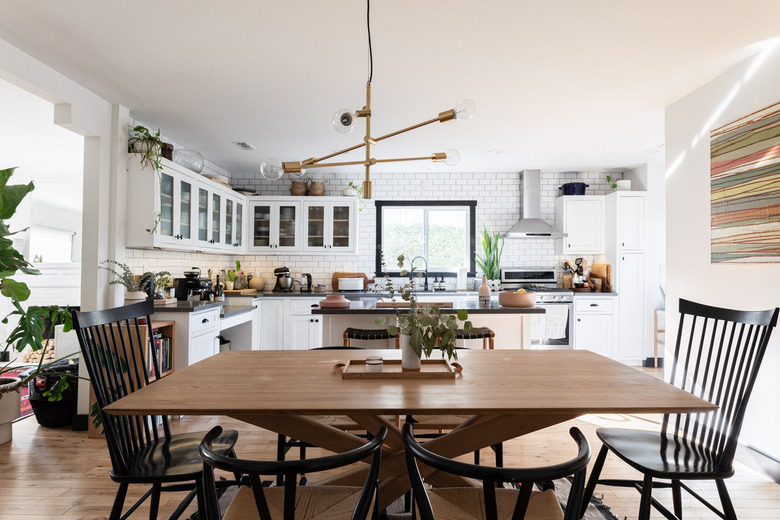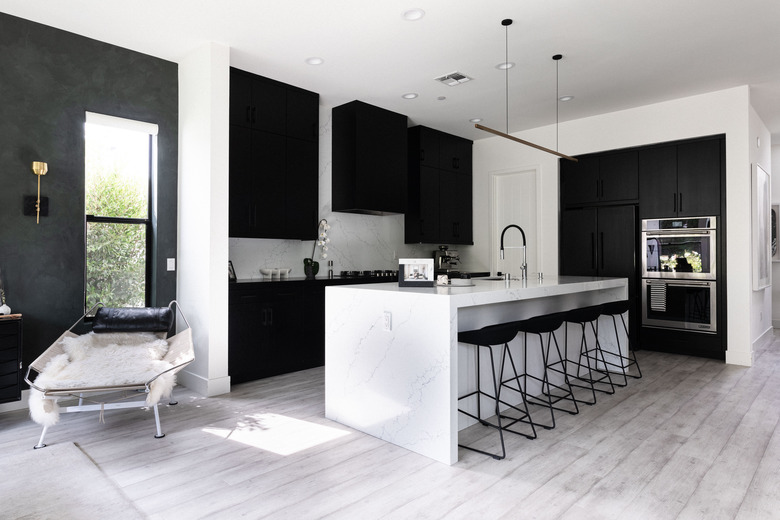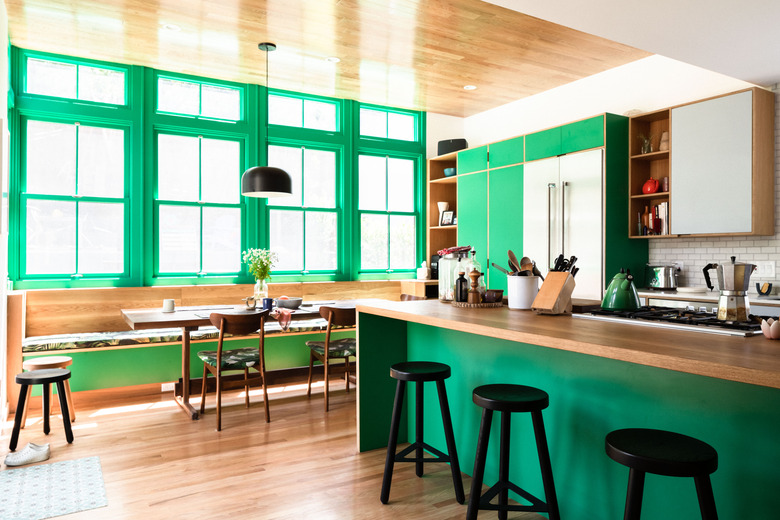Why Do You Need Filler Strips For Cabinets?
Gaps between kitchen cabinets and walls can make even an upscale kitchen remodeling project seem a bit unfinished. Filler strips matching the cabinets come to the rescue, filling those unsightly spaces between the cabinets and walls, appliances or even other sets of cabinets. In many cases, the cabinet manufacturers offer filler strips to ensure the wood type and finish are a perfect match for the cabinets. Whether you use strips provided by the manufacturer, buy some off the shelf or create your own, you'll probably have to cut the strips to fit.
Tip
Filler strips close the gap between cabinets and walls or cabinets and appliances for a more finished look. In some cases, they're used to allow corner-cabinet doors enough room to swing completely open.
What Are Filler Strips?
What Are Filler Strips?
Filler strips are small boards or planks designed to cover the voids between appliances, cabinets and walls in the kitchen. While they're usually wood, they may be plastic, laminate or a combination of materials designed to match their surroundings.
Many manufacturers offer these as 3/4-inch-thick strips at 3- or 6-inches wide, with the length varying from 30 to 80 inches. This allows ample length for filling a gap even along tall cabinetry such as pantry cabinets. Filler strips are usually installed vertically, but in some cases, they are used horizontally as risers for crown molding, according to cabinets.com.
For corner cabinets or wall or base cabinets adjacent to a wall and with doors that swing open toward the wall, a filler strip may be necessary to ensure the door can fully open, according to Klearvue Cabinetry. In this case, the cabinet manufacturer usually includes filler strips cut to the height of the cabinet.
The cabinet-installation literature should also mention how much clearance and therefore how wide of a filler strip is needed between the wall and the cabinet for the cabinet door to open fully. If filler strips are a must, the cabinet-installation instructions may suggest attaching the filler strips before installing the cabinets, but this can be tricky if measurements are not accurate or if the walls are a little out of square.
Where to Find Filler Strips
Where to Find Filler Strips
Filler strips that match your cabinets are best purchased directly from the manufacturer or retailer within a short time after the cabinets are purchased. This ensures the correct finish is available, as companies may discontinue certain styles or colors after a few years.
Big-box home-improvement stores like The Home Depot and Ikea carry a wide selection of filler strips as well. These generally match styles of cabinets sold at the store, but you may be able to find a close match for your cabinets even if you aren't sure where they were purchased. You can also buy nonmatching filler strips if you plan to paint your cabinets.
Another option is to buy boards of the same wood type as your cabinets and then finish them to match the cabinets. It may be difficult to get an exact match this way, so it helps to test any stain or finishing product on scrap wood of the same type or on the back side of the wood you purchase for this project. If you plan to paint everything, the wood type does not need to match the cabinets.
Fitting and Cutting a Filler Strip
Fitting and Cutting a Filler Strip
Even straight from the manufacturer, a cabinet filler strip probably will not fit its intended space since kitchen design and cabinet layout vary from one home to the next. Houses also settle a bit, so the walls and floors may no longer be perpendicular to one another.
- Measure the gap between the cabinet and the wall or nearby appliance, taking measurements near the top and bottom of the gap, as the space probably widens or narrows at one end.
- Cut a piece of corrugated cardboard to match the height of the cabinet and the widest portion of the gap. For instance, if the void is 3 inches at the bottom and 2 3/4 inches at the top, cut it to 3-inches wide.
- Test fit the cardboard into the hole. If it fits snugly, use it as a template and trace its outline onto your filler strip. If it doesn't fit properly, trim it as needed or make a new cardboard template until you get one that fits snugly and then trace it onto the filler strip.
- Cut the filler strip to size, slightly outside the template's lines so the wood requires sanding for a snug fit. For a straight, long cut, a table saw is ideal, but a circular saw will also work provided the filler strip is clamped to a stable work surface in a way that you can easily slide the saw along the edge that needs to be cut.
- Test fit the filler strip into the gap near the cabinet; it should be slightly large for the space. Sand the board's sides with a belt sander or palm sander and 100-grit sandpaper so both sides taper inward, making the back side slightly narrower than the face. Continue until the piece fits the gap as perfectly as possible.
Scribing When Necessary
Scribing When Necessary
If the wall is plaster, drywall or is covered in paneling, straight cuts on a filler strip won't form a fit that contours to the wall side of the strip. In this case, scribing, or using a compass and sharp pencil, is necessary to accommodate the contour down the length of the strip. Practicing with a scrap piece of wood is a good idea to ensure accurate scribing.
- Hold the compass parallel to the floor and open it so the point touches the wall and the tip of the pencil touches the widest portion of the gap between the cabinet and wall. Lock the compass at this width.
- Position the filler strip vertically and plumb against the wall as close to the front of the cabinet as possible since you won't be able to fit it in its permanent location yet.
- Hold the compass parallel to the floor again with the metal point touching the wall and the pencil tip touching the filler strip. Slide the compass down the full length of the filler strip so the pencil marks the line to cut.
- Cut slightly outside this line using a jigsaw or band saw. Use a belt sander to sand the back side edges of the filler strip slightly so the filler strip tapers toward the back. Continue until the piece fits the gap.
Attaching the Filler Strip
Attaching the Filler Strip
Attaching the filler strip to the side of the cabinet works well in most cases — it still allows you to slide out adjacent appliances if the strip fills a gap between a cabinet and the dishwasher, for instance. A bead of wood glue along the side of the strip touching the cabinet does the job for strips alongside appliances.
For a more permanent situation, use #8 2 1/2-inch wood screws at the top, bottom and middle of the cabinet edge that touches the fill strip. Drill pilot holes in the desired locations in the front vertical edge of the cabinet framework inside the cabinet as well as in the side edge of the filler strip. Countersink the wood screws inside the cabinet so the heads rest flush with the inner framework.


